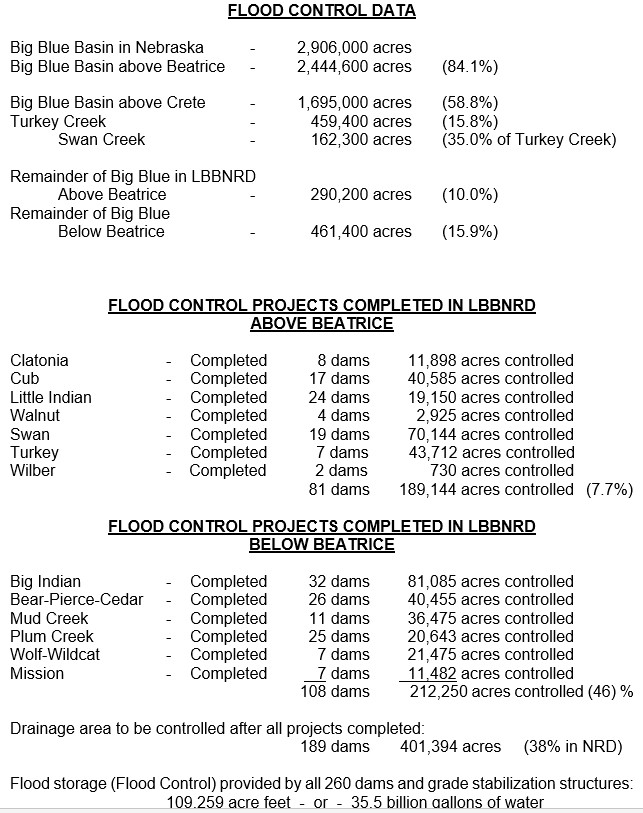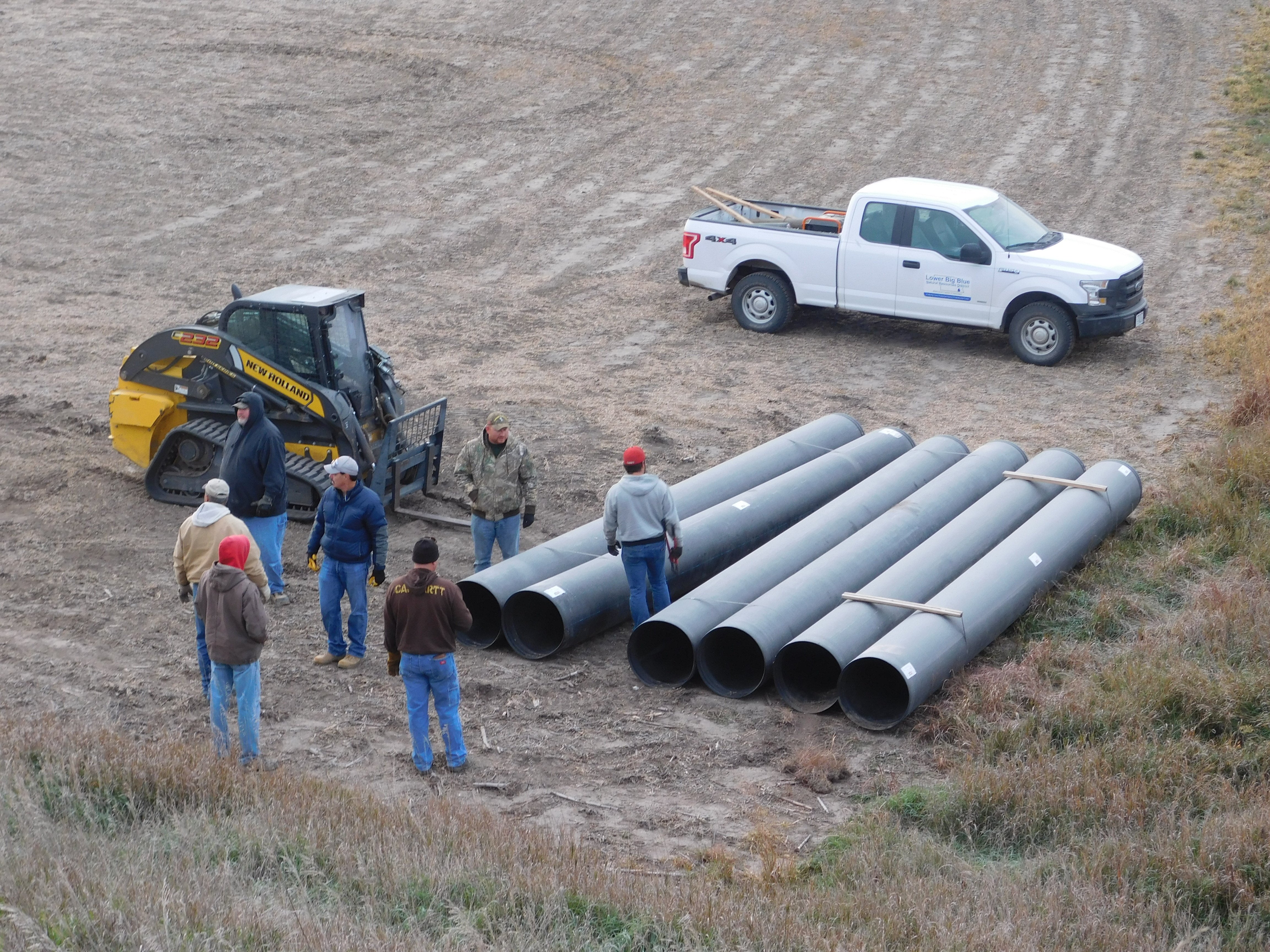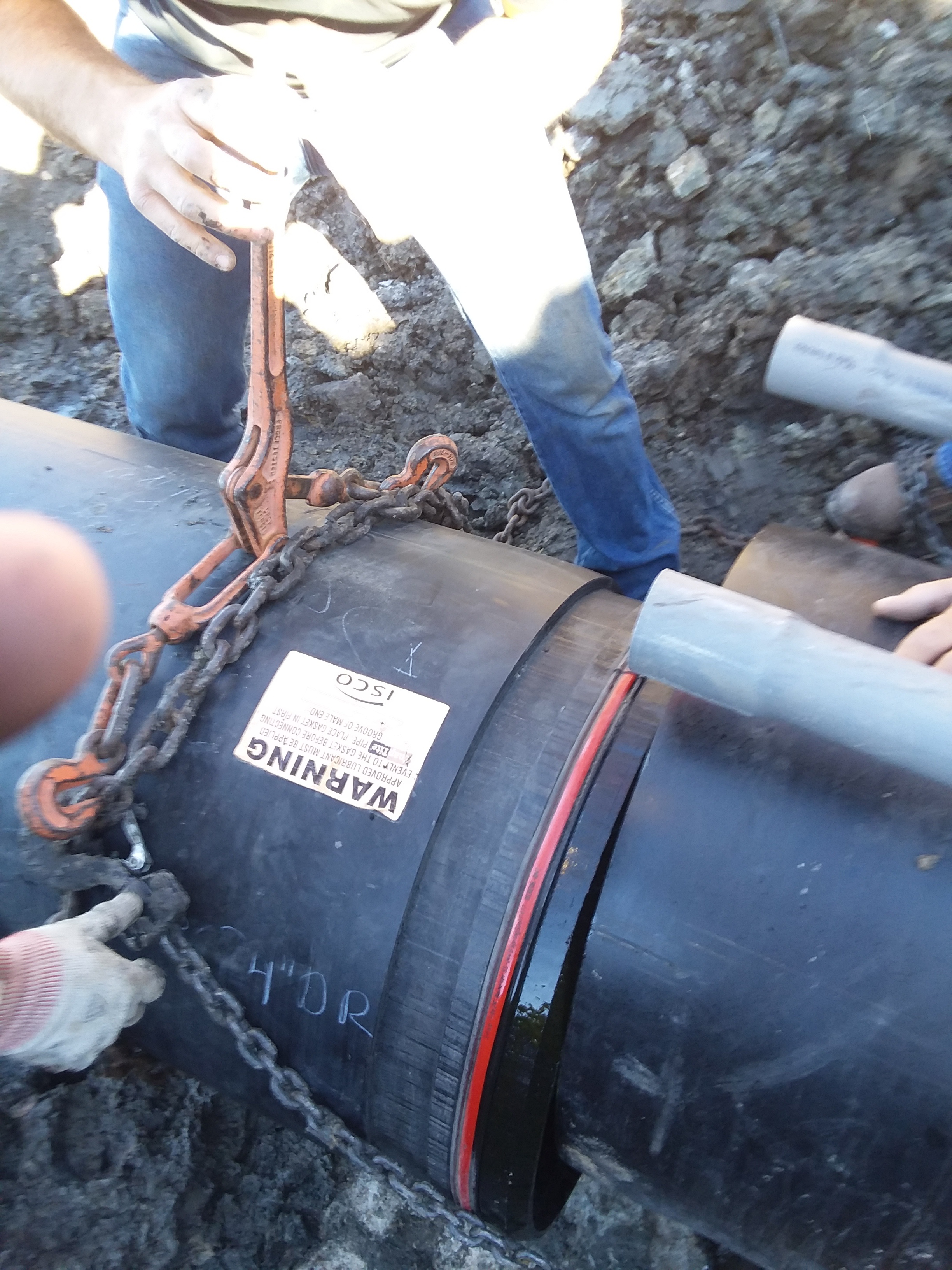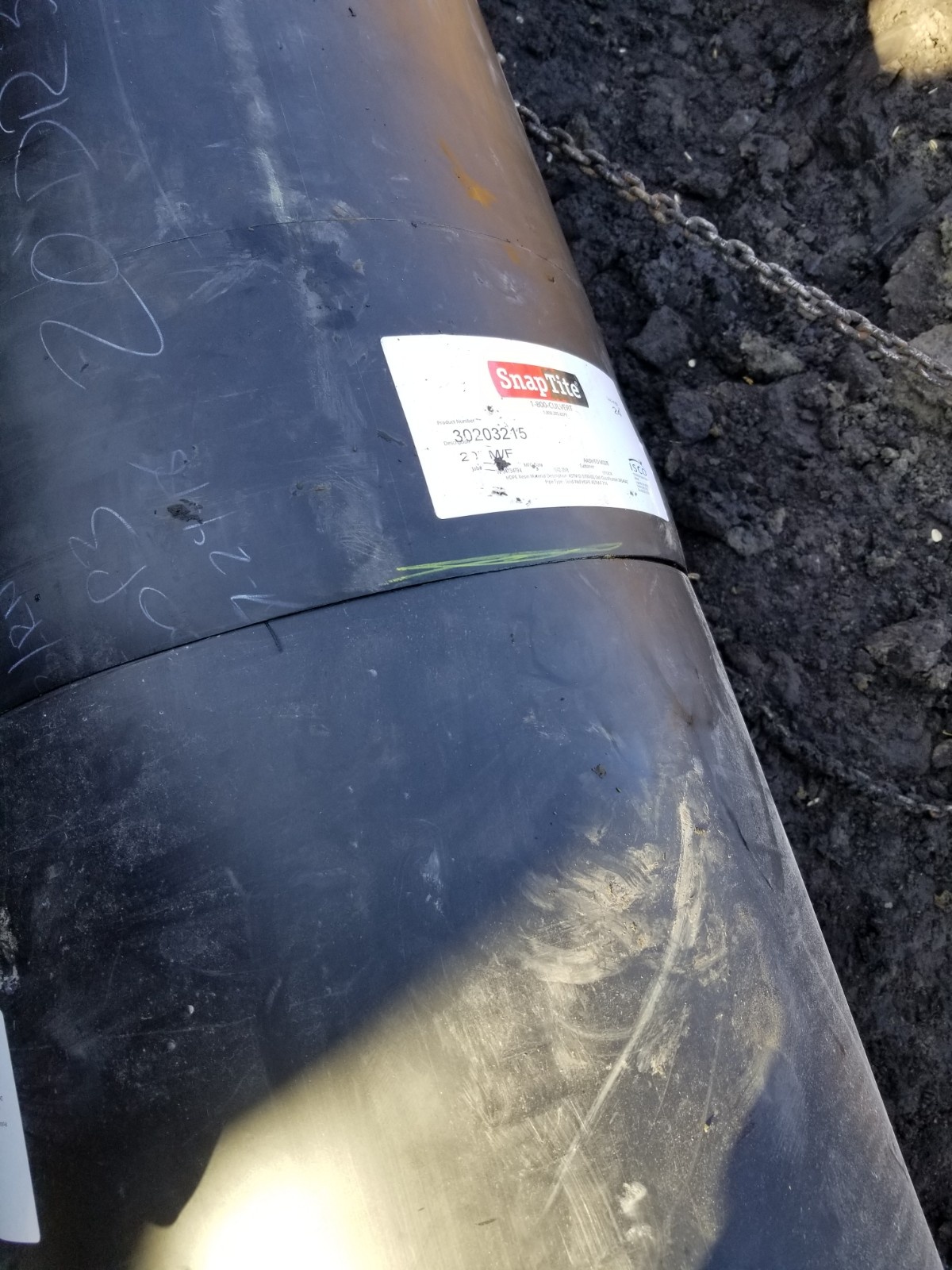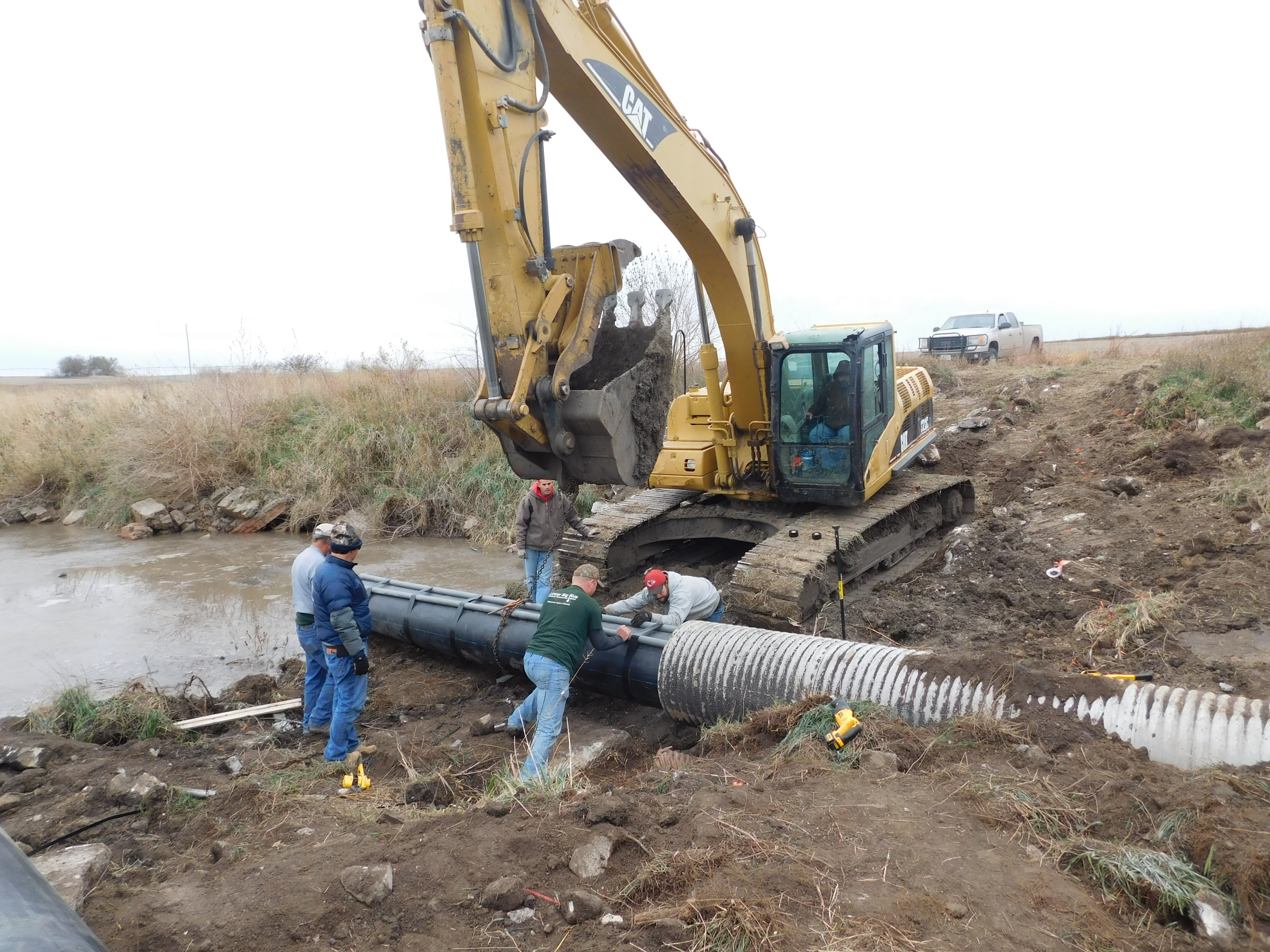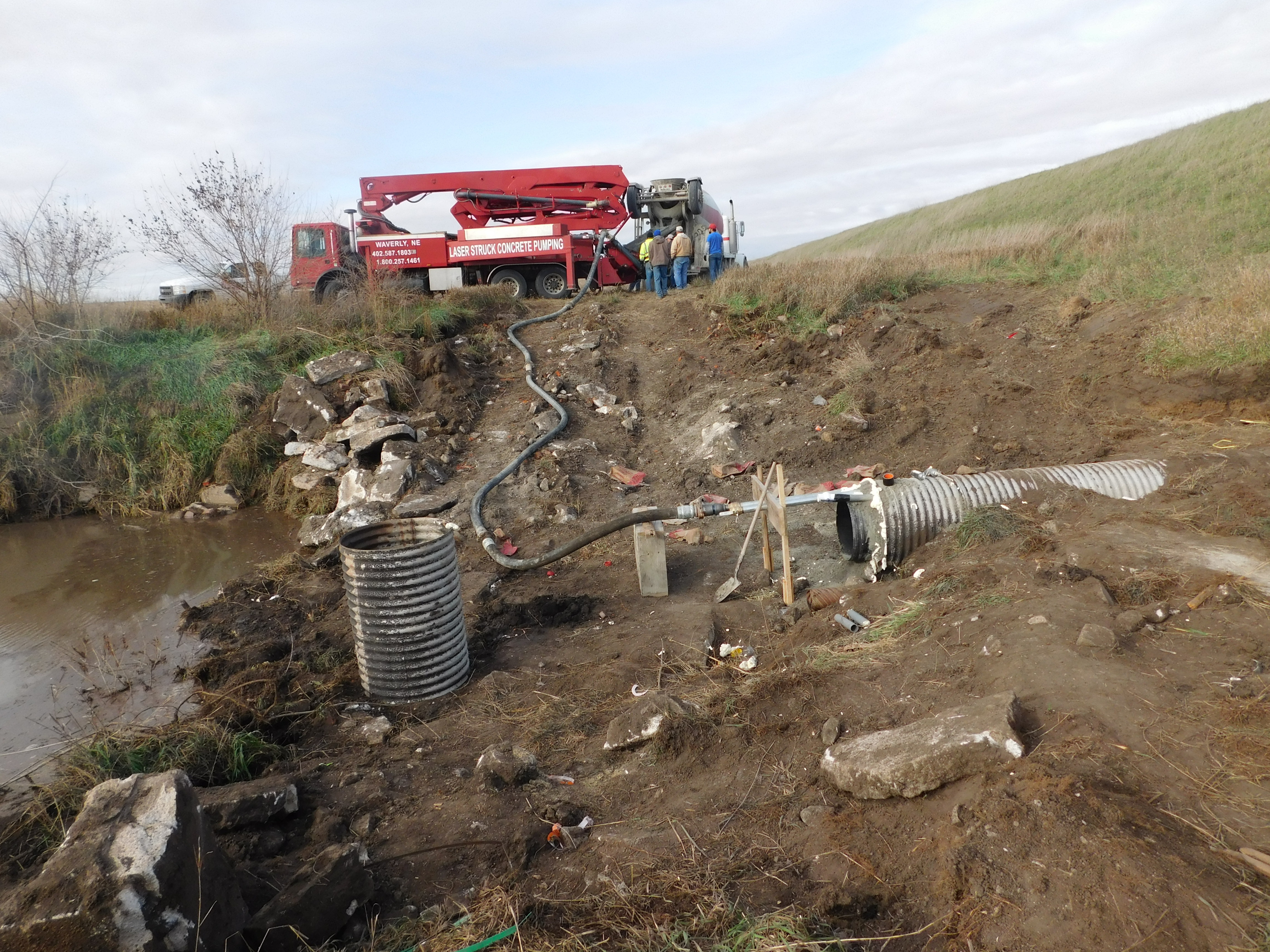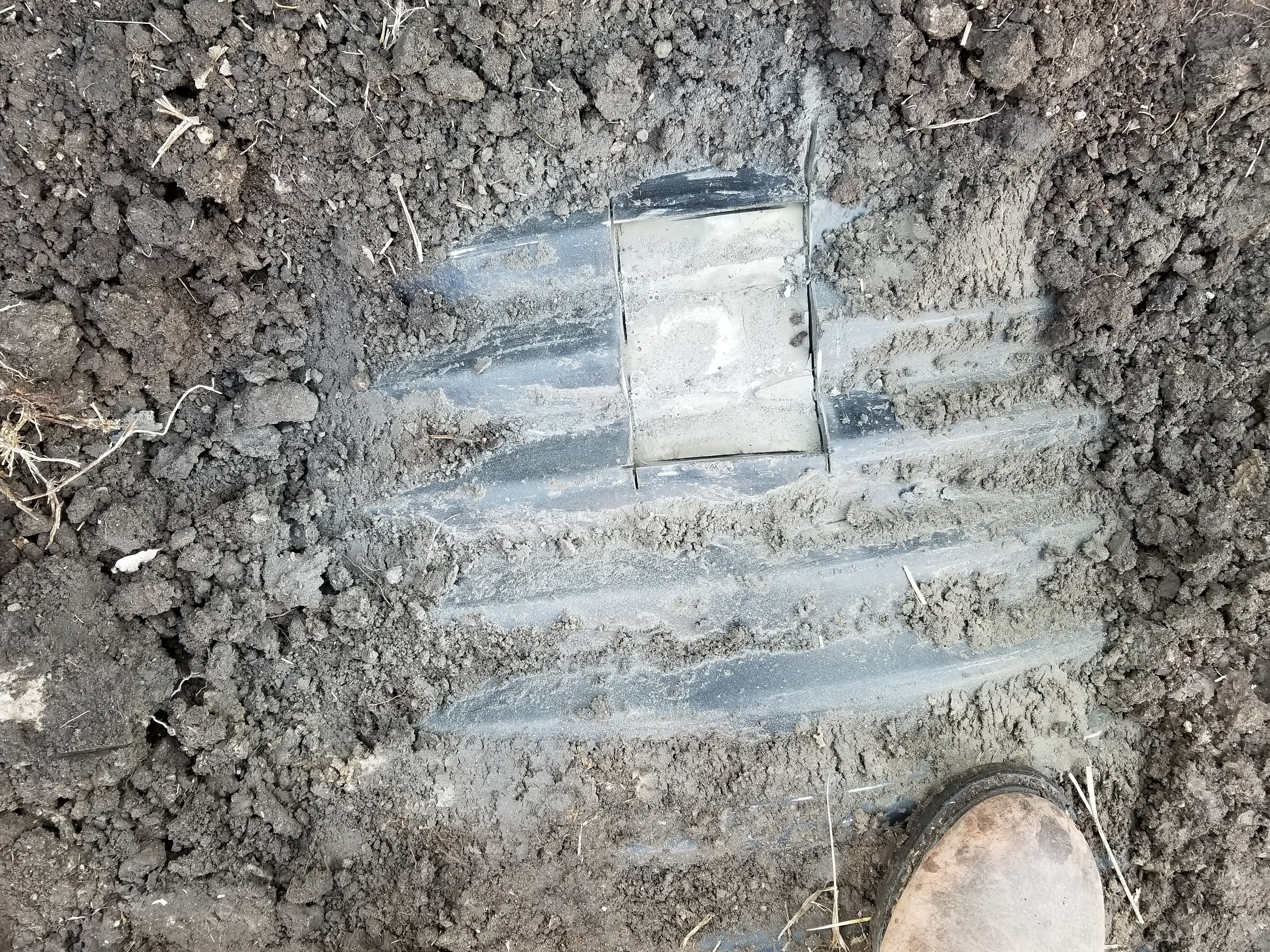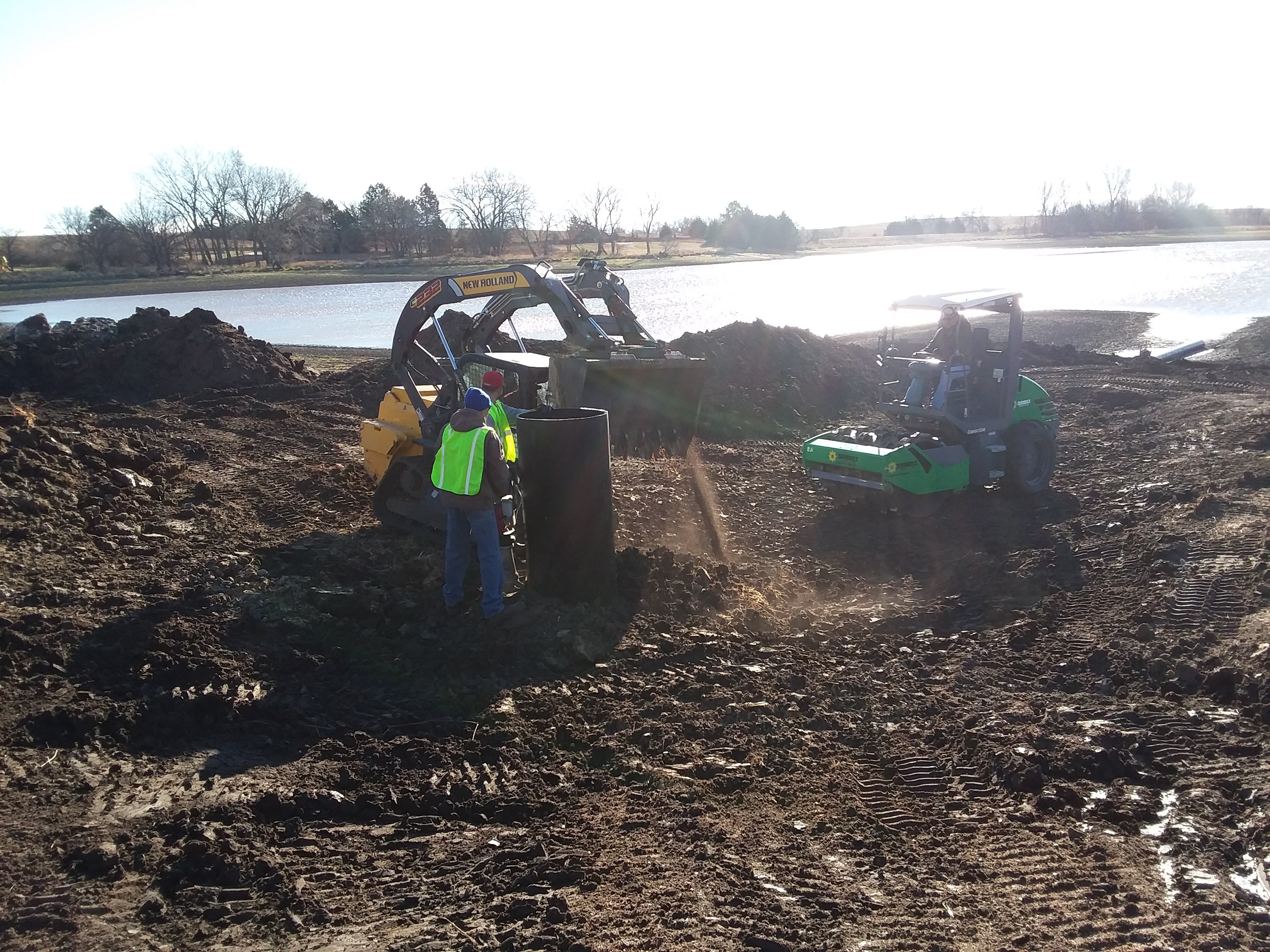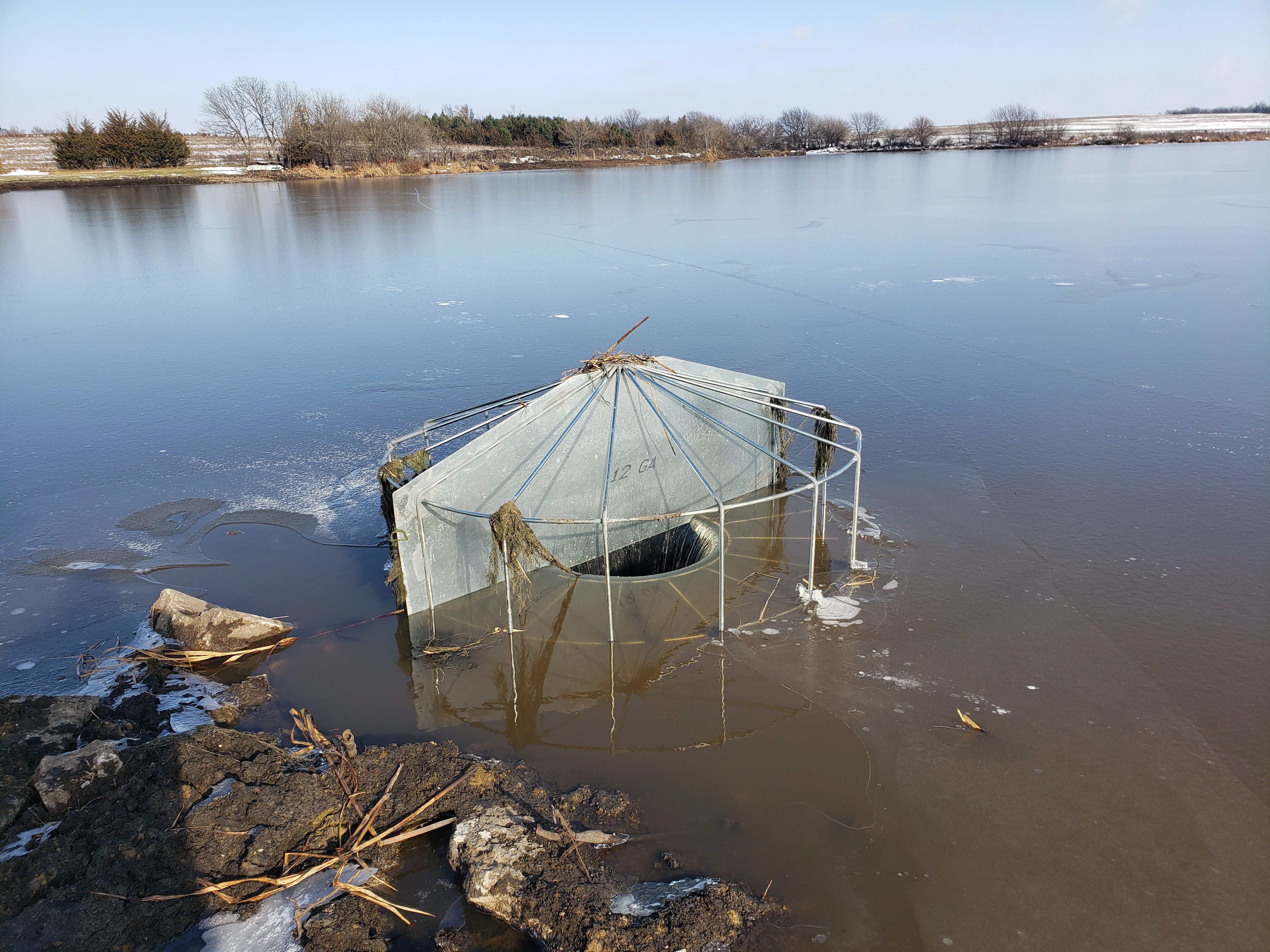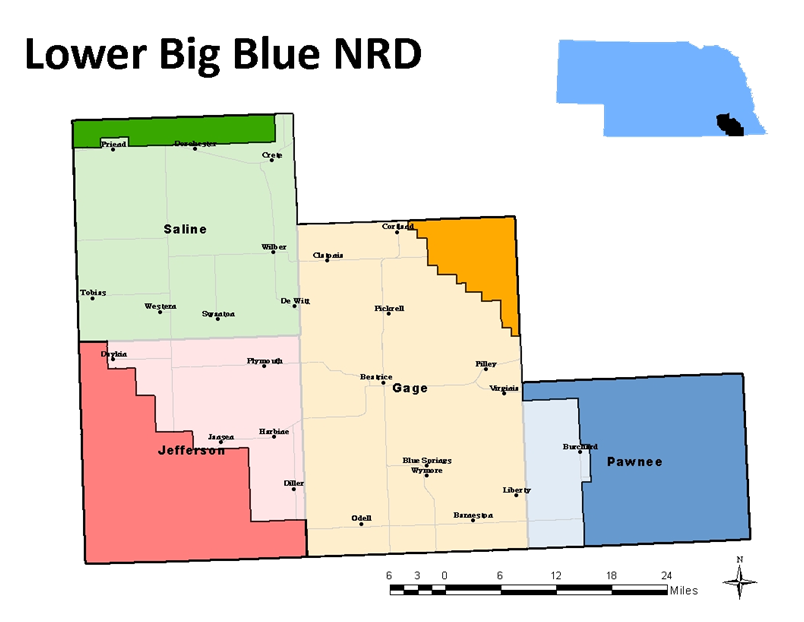The Lower Big Blue NRD contains 12 watersheds around the district. These watersheds contain the major streams in the district and all the tributaries that flow into the major stream. Earthen dams are strategically placed along these tributaries to provide flood prevention and soil conservation. The watersheds surround these major streams: Turkey Creek, Swan Creek, Cub Creek, Big Indian Creek, Walnut Creek, Clatonia Creek, Little Indian Creek, Bear Creek, Pierce Creek, Cedar Creek, Mud Creek, Wolf Creek, Wildcat Creek, Plum Creek, and Mission Creek.
The NRD first started planning the development of floodwater retaining structures and grade stabilization structures in the 1950s. This development also included numerous small farm ponds, terracing, and native grass seedings. Nearly 65 years later the NRD along with the NRCS continues to implement these land treatment practices for flood prevention and soil conservation.
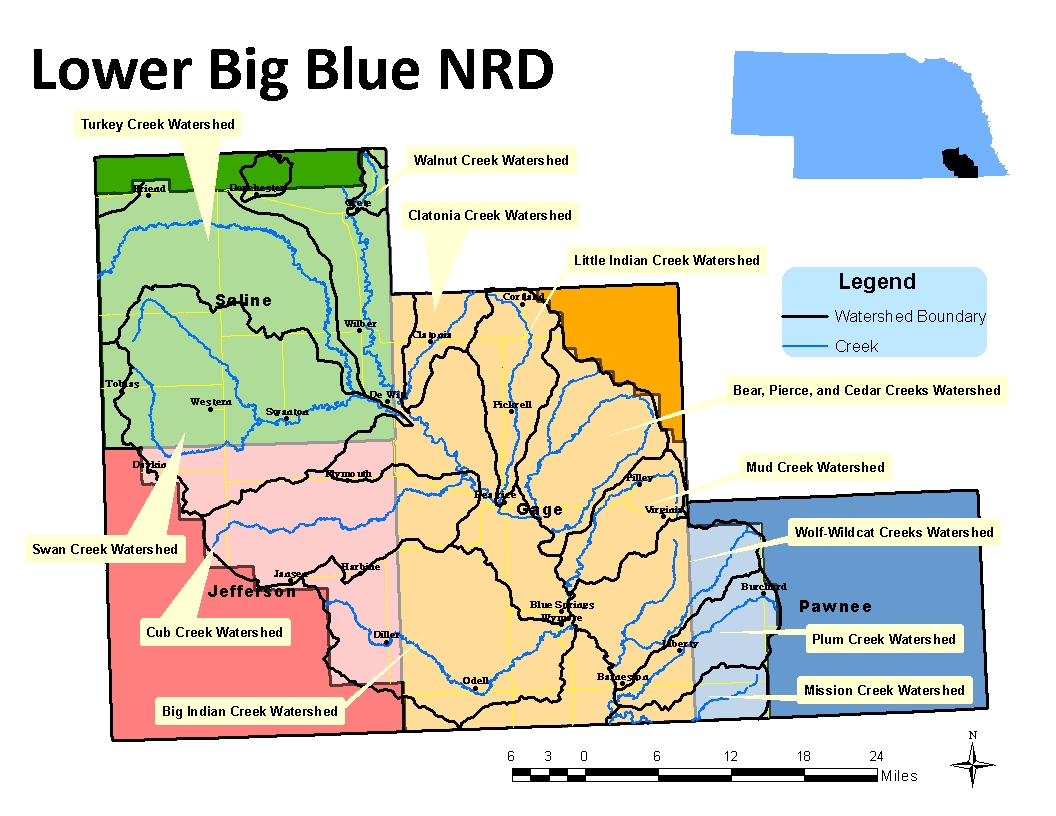
| |
This is the renovation project of a little indian flood control structure north of Beatrice.
Check out more of our videos on  YouTube!
YouTube!
The Lower Big Blue Natural Resources District has considered and utilized various methods and products for combating the problems that often accompany aging dams over the years. Very often, the culprit is oxidation, particularly on structures which employ a corrugated metal pipe (CMP) for the principal spillway. Generally, over the life of a dam, a CMP will begin to develop rust on the bottom side of the tube. Given enough time, pin holes may develop which ultimately turn into larger holes, and invariably, voids can begin to form under the principal spillway causing undercutting and potentially failure of the dam to function properly.
The past couple years, the NRD has been in the process of installing Snap-TiteTM High-Density Polyethylene (HDPE) pipe in many of its structures. As the name implies, the pipe snap together around a gasket, and can be fused to a new riser once inserted into the existing tube. Ventilation and grout pipe are installed alongside the new tube for efficiently injecting grout into the annular space which remains. This creates a solid bond between old CMP and new HDPE, extending the life of the structure well into the future. The HDPE is able to be of smaller diameter due to the difference in hydrology between smooth-walled pipe (the HDPE) and the CMP, or existing pipe. The process usually takes about a week and saves quite a bit of time and money.
| |
| |
The Lower Big Blue NRD is responsible for the maintenance and upkeep of the over than 250 flood control structures within the district. For proper functionality of these structures the NRD is asking for help from landowners. Any construction or improvements (sediment removal/fill, buildings/houses, etc.) must be approved by the NRD Board prior to starting. Emergency spillways are to be maintained unobstructed (buildings, farm equipment, hay bales, etc.). If you notice any beavers, other rodents, or anything else out of the ordinary, please notify the NRD.

